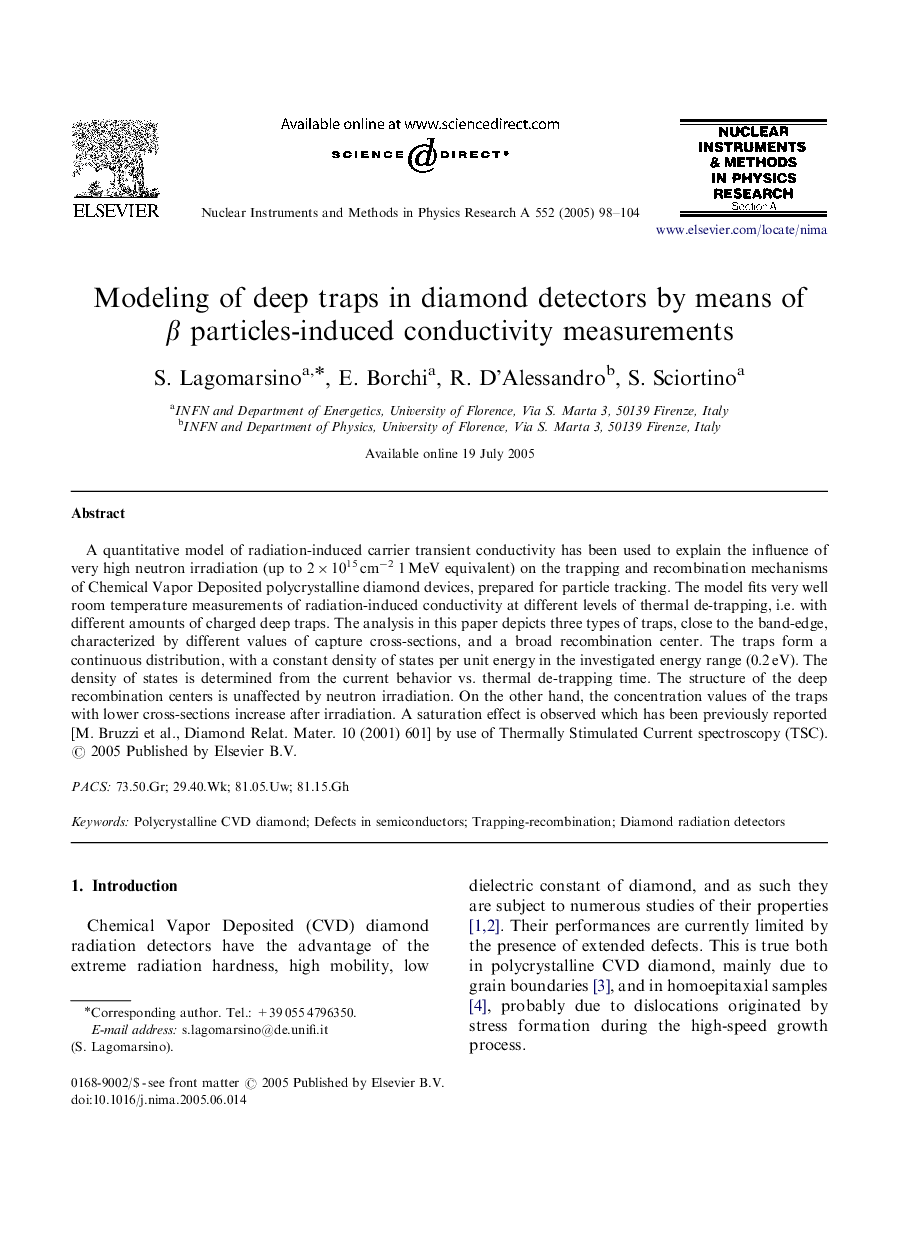| Article ID | Journal | Published Year | Pages | File Type |
|---|---|---|---|---|
| 9845038 | Nuclear Instruments and Methods in Physics Research Section A: Accelerators, Spectrometers, Detectors and Associated Equipment | 2005 | 7 Pages |
Abstract
A quantitative model of radiation-induced carrier transient conductivity has been used to explain the influence of very high neutron irradiation (up to 2Ã1015Â cmâ2 1Â MeV equivalent) on the trapping and recombination mechanisms of Chemical Vapor Deposited polycrystalline diamond devices, prepared for particle tracking. The model fits very well room temperature measurements of radiation-induced conductivity at different levels of thermal de-trapping, i.e. with different amounts of charged deep traps. The analysis in this paper depicts three types of traps, close to the band-edge, characterized by different values of capture cross-sections, and a broad recombination center. The traps form a continuous distribution, with a constant density of states per unit energy in the investigated energy range (0.2Â eV). The density of states is determined from the current behavior vs. thermal de-trapping time. The structure of the deep recombination centers is unaffected by neutron irradiation. On the other hand, the concentration values of the traps with lower cross-sections increase after irradiation. A saturation effect is observed which has been previously reported [M. Bruzzi et al., Diamond Relat. Mater. 10 (2001) 601] by use of Thermally Stimulated Current spectroscopy (TSC).
Related Topics
Physical Sciences and Engineering
Physics and Astronomy
Instrumentation
Authors
S. Lagomarsino, E. Borchi, R. D'Alessandro, S. Sciortino,
